Vietnam: answering the call
Posted on December 7, 2021, by Mary Nelle Gage SL
‘Get your passport, get your shots; I need help.’
Susan Carol McDonald SL to Mary Nelle Gage SL in June 1973
The Vietnam War gave rise to thousands of orphans. As husbands and fathers were killed, surviving mothers became the sole providers for their families. Rural agrarian life was disrupted and many fled to cities; the traditional extended family no longer provided stability. In addition, socioeconomic and traditional values often required a mother to relinquish a mixed-race child. Children born with handicaps or who developed serious illnesses could not be cared for by poverty-stricken families.
Walter Cronkite began his nightly CBS evening news broadcast with the death count from Vietnam from the late 1960s through the early 1970s. As a young newly professed sister and a high school speech, drama and English teacher, my abiding thought was, “What could I do that would be positive?” In the spring of 1973, my former Loretto Heights College classmate, Susan Carol McDonald — who was now Sr. Susan Carol, a nurse at our Motherhouse in Kentucky — announced that she would be volunteering to nurse orphans in Saigon. During a Holy Week Motherhouse visit, I told Susan that if there was something someone without medical skills could do, I would come to help. In early June, six days after her arrival, Susan wrote to me and said, “Get your passport, get your shots; I need help.”
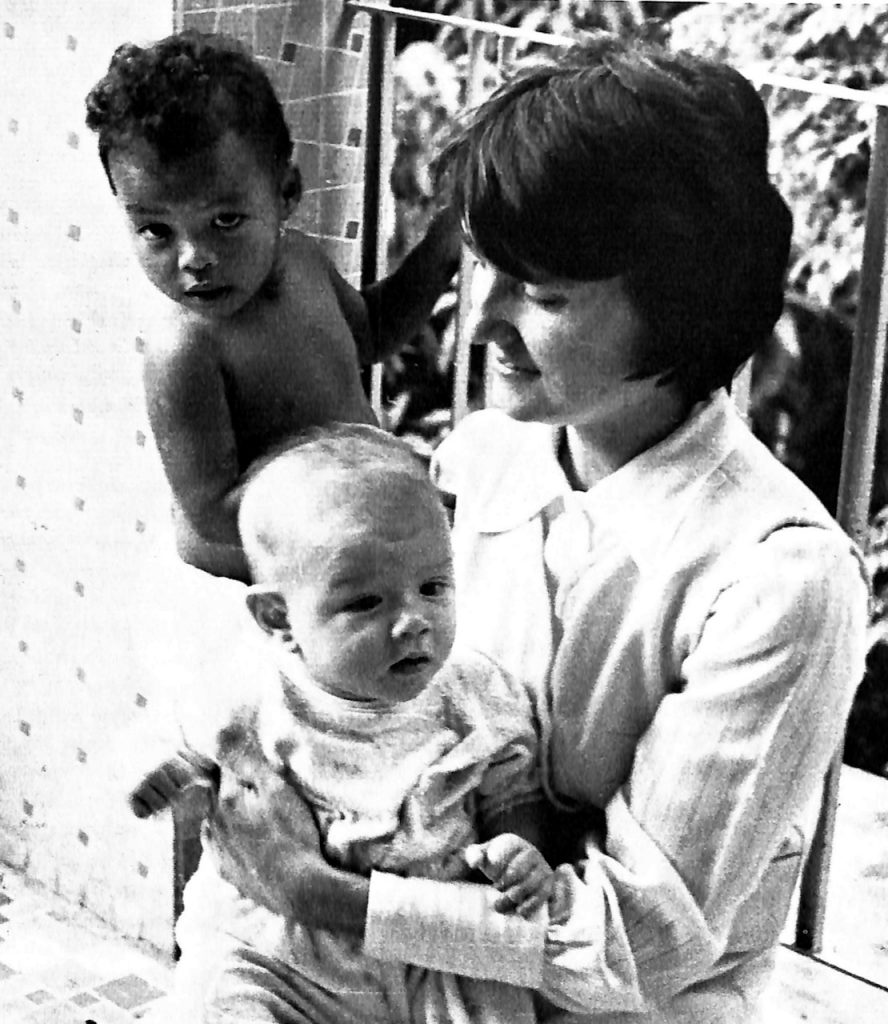
Photos courtesy of Loretto Archives
Cribs filled every room …
New Haven was an old French villa with stucco walls and tile floors that Susan administered and where she nursed the 60 infants and toddlers in her care. Each baby had its own white crib with mosquito netting all around that Susan had bought in the Saigon market.
Cribs filled every room on the main level and on the second floor. On the roof was an air-conditioned bedroom and the large laundry where Vietnamese staff washed and hung diapers all day every day. The living room served as Susan’s bedroom, our dining area and the meeting room. In the kitchen on the first floor, rice, meat, fruit and vegetables were prepared, formula was made and bottles were filled all day every day. Depending on the needs of the child (many were severely malnourished or had serious disabilities), each child care worker had three, four or five babies to hold and feed, change, bathe and play with during her shift.
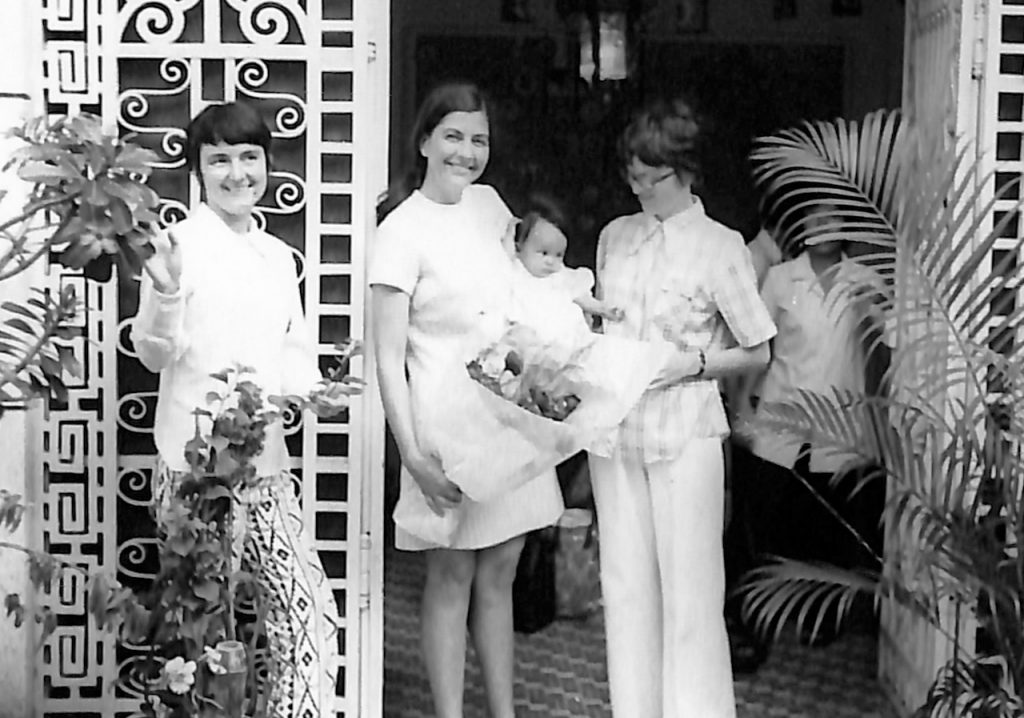
Photos courtesy of Loretto Archives
Our group of volunteers in Saigon was mostly female nurses from Germany, Canada, England, Australia and the U.S.; several of us were nuns or former nuns.
Rosemary Taylor, a former Mercy sister from Australia, had begun the work for orphans in 1968. To Am was the first nursery she opened, renting a French villa in central Saigon. Two German nurses joined Rosemary to care for the children. As more and more orphans needed nursing and foreign adoption, a second house and then a third were rented and staffed by a few foreign volunteers and paid Vietnamese staff. While several other agencies opened in Saigon to provide adoption services, Rosemary pioneered international adoption from Vietnam and was responsible for over 2500 children being placed with families throughout the world.
In 1973 our fourth nursery, Hy Vong (House of Hope), opened, and we moved the nursery for toddlers and older children to the new villa which had a pool and large yard — more appropriate for the older children to play. We opened a small school and employed a few Vietnamese teachers.
In the four nurseries we continually cared for about 400 infants, toddlers and older children. At least 10 orphans left for adoptive homes every week, going to Europe, Australia, Canada and the U.S. Our adoption office was at New Haven.
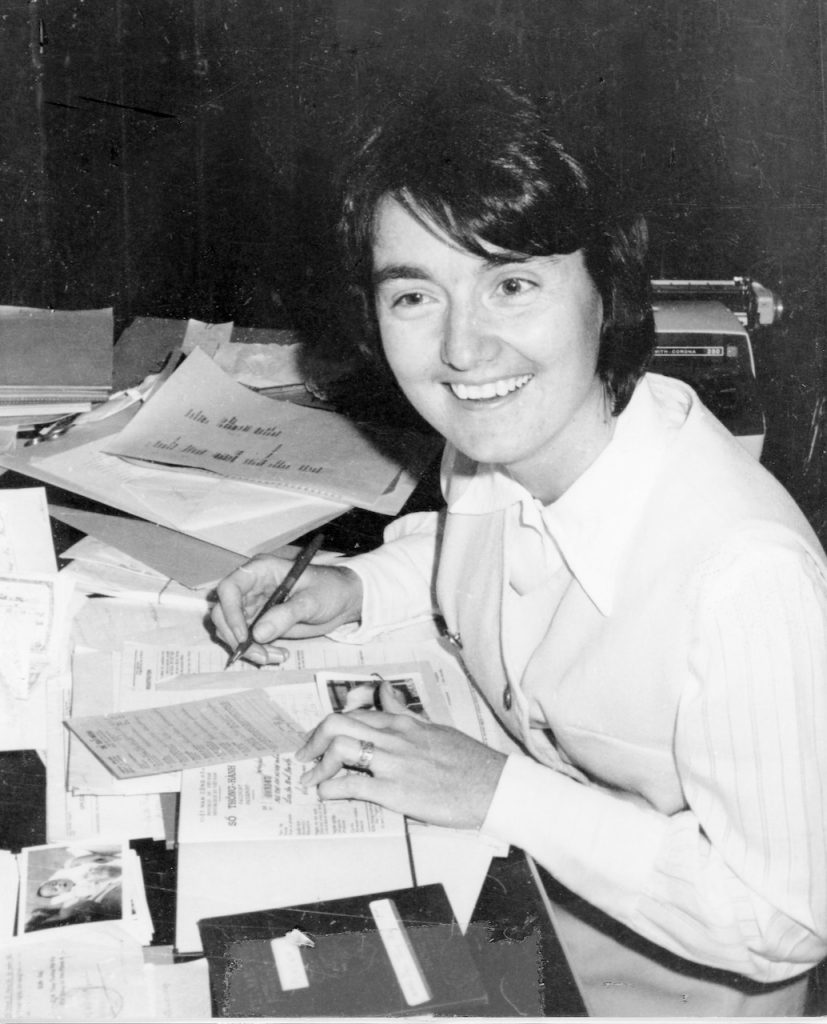
Photos courtesy of Loretto Archives
My duties included: working with the consular staff at the U.S. Embassy to obtain entry visas and with Pan Am and Air France to arrange travel for children and escorts; corresponding with the donors and international organizations; and preparing supplies for groups of departing children that included departure outfits, in-flight clothing and very nice arrival outfits in which the child would meet his or her adoptive parents.
Mary Nelle, living at New Haven, would share the increasing burden of general administration for the entire programme.
Rosemary Taylor, “Orphans of War”
Sights and sounds of war were omnipresent.
Sometimes the gate bell would ring and we would watch one of the child care workers collapse with the news of the death of a brother, a father.
In spite of monumental efforts to provide the best medical and nutritional care, some of our babies did not survive. Susan would dress the baby for the mortician and we who had cared for the child would come to bid farewell. I usually accompanied the child in its tiny coffin to the cemetery where there were numerous flag-draped graves of recently killed soldiers and where we had purchased a plot.
Weekly we filled a van with supplies that supporting organizations had sent via mail or airplane, and brought back children needing adoptive homes. Local maternity clinics sent abandoned infants and provincial orphanages, usually operated by Catholic religious, contacted Rosemary when there were abandoned children needing foreign adoption.
Rarely, a parent would come to relinquish a child directly to us. Luu My Le, our U.S.-trained social worker, worked with the parent, trying to determine what was needed for the child to stay with the parent. On one occasion, we hired a new mother as a lactating nurse, knowing the value of mother’s milk to an infant. Her son was cared for in our nursery until she could manage to take him home.
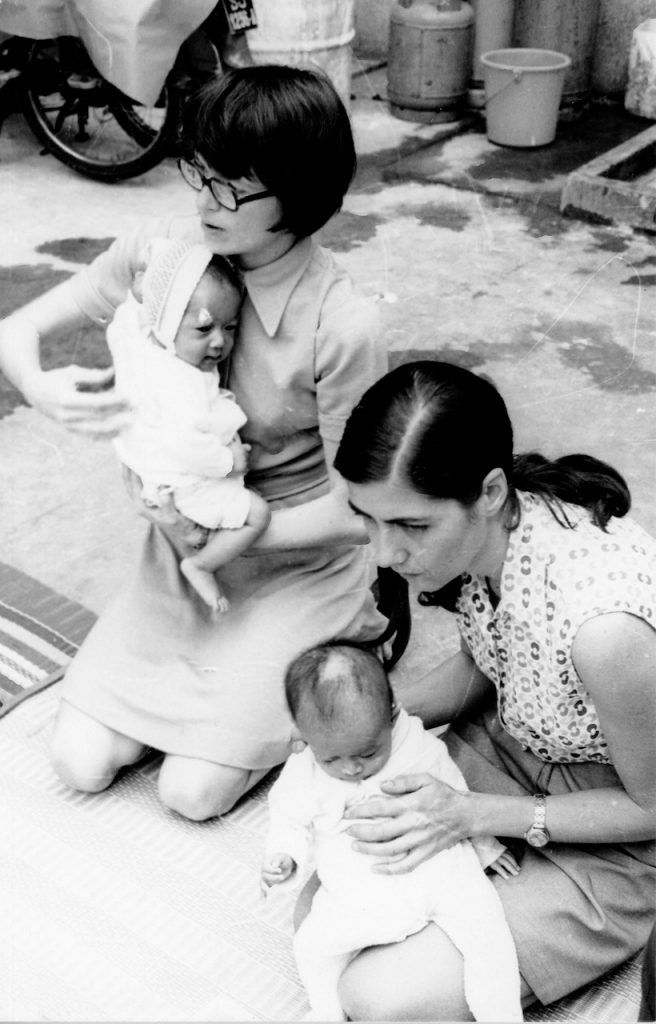
Photos courtesy of Loretto Archives
Departure day: a mixed blessing
Departure day from the orphanage and from our nursery was a mixed blessing. We wanted each child to have his or her own family in a safe and healthy environment, but during the months in our care, holding them, playing with them, we became attached. We were overjoyed when they had survived long enough to endure a grueling 18-hour airplane ride, but we knew we may never cuddle them or even see them again.
In addition to the everyday delight of holding children, one of our more joyful duties was naming them. Each had his/her Vietnamese name, formalized on both the birth certificate and orphanage release, registered with the Vietnamese government. But the nursery gave each child a Western name for nursery and placement purposes. That name would be listed in Susan’s New Haven registry as well as on a hospital ID bracelet and on each child’s health record booklet. Some were named after Loretto Community members: PJ (after PJ Manion SL), Anna (after Anna Koop SL), Luke (after Mary Luke Tobin SL). We had a Thomas Merton, a Catherine of Siena, a John of the Cross. There was a Will Shakespeare, a Lysander and a Hermia, a Robert Frost.
In February 1975 I flew to the U.S. to raise funds to evacuate and care for the orphans whose arrivals were expected to escalate considerably. As flights out of Vietnam increased I was in San Francisco, and later Seattle, receiving and caring for the children.
Urgency and tragedy at war’s end
By early April 1975 it was clear that South Vietnam was about to be overrun by forces from the North. All who worked with the children prepared to evacuate them. There were days and nights of desperate discussions with officials. Finally, the Australian and U.S. governments provided military aircraft for departure. In the U.S., flights landed first in San Francisco where we had worked with the U.S. Army to arrange immediate care for arriving orphans.
On April 4 in a devastating turn, our flight out of Saigon on a C-5A military transport aircraft carrying 320 passengers crashed shortly after takeoff. On board were 230 children. Seventy-eight children and six of our volunteers died, in addition to crew members and other passengers.
The reappearance of [Loretto Community member] Ruth Routten in Saigon was a welcome event.
Rosemary Taylor in “Turn My Eyes Away: Our Children in Vietnam 1967 to 1975”
After the C-5A crash, Ruth Routten CoL flew to Saigon to assist Susan and Rosemary with the evacuation. Ruth and Susan met with numerous U.S. officials trying to secure flight space for hundreds of children and the remaining volunteer staff. After purging thousands of adoption files, Ruth persuaded Flying Tigers to take metal footlockers containing bare-essential documentation for each child to the U.S. Meanwhile, I was in San Francisco, working with the arriving children and very few volunteers, including some of our at-risk Vietnamese professional staff. Paulette Peterson (Loretto sister at the time, now a co-member) and Mary Catherine Rabbitt SL, who was studying at Berkeley, spent days and nights assisting with the arrivals and subsequent departures to adoptive families. Mary Quayhagen SL, teaching and working in San Francisco, was also of special assistance.
Loretto ties held us close
Paulette Peterson and former Loretto Community member Dawn Dorsey had each brought to Vietnam their skills in special education to provide evaluations of special needs children and to train Vietnamese child care staff. In addition to those who stayed for longer periods, Mary Luke Tobin SL came to Saigon on a peace mission; Patricia Jean (PJ) Manion SL visited us during her Semester at Sea tenure; Mary Fran Lottes SL came as an escort to accompany children to St. Louis; Sharon Palma CoL adopted our Eyal, now Christopher. Some of the children destined for European and Australian families had not yet received the required entry visas; Loretto houses in Denver received babies for whom they cared until the visas were in order.
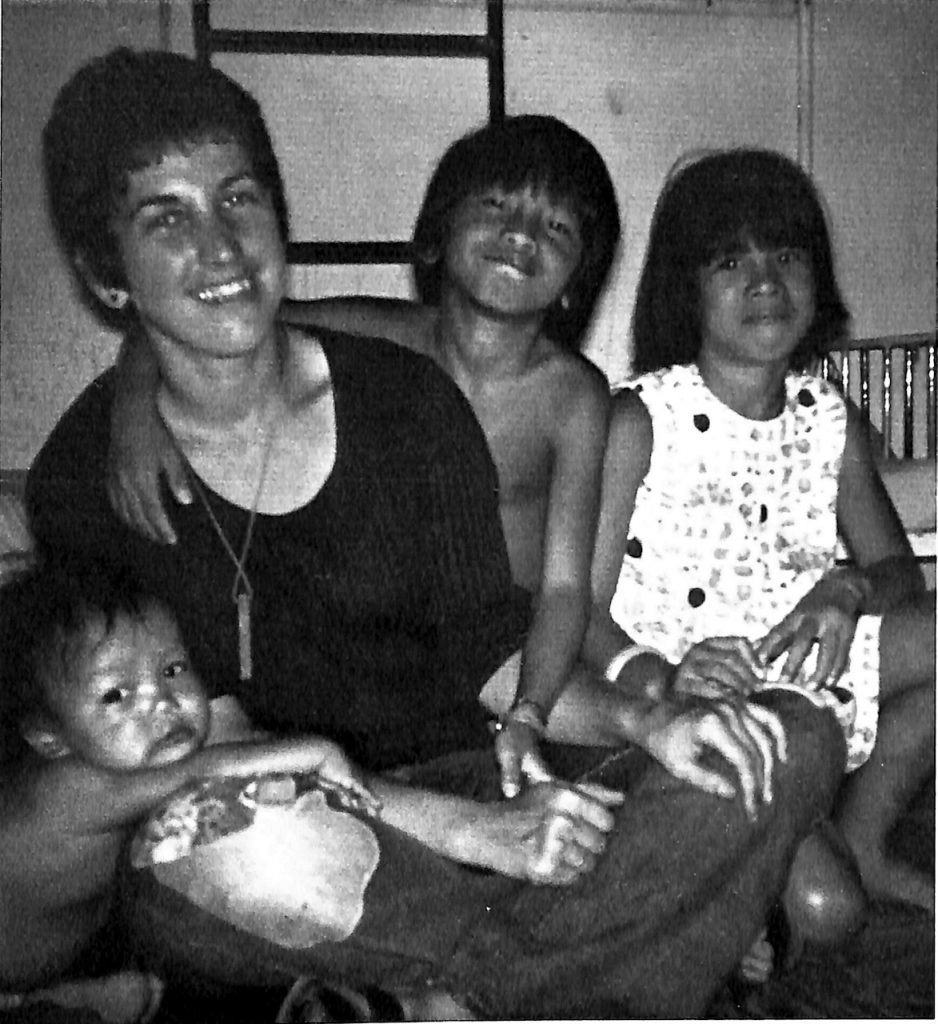
Photos courtesy of Loretto Archives
The final word: gratitude
Language and space do not permit an adequate expression of the blessing that Vietnam and some of her children have been on our lives. In 1973 we took the road less traveled and that has made all the difference.
Mary Nelle Gage SL went on to help resettle refugees from numerous countries for 20 years. She lives in Colorado and is in close contact with many of the Vietnamese adoptees.
